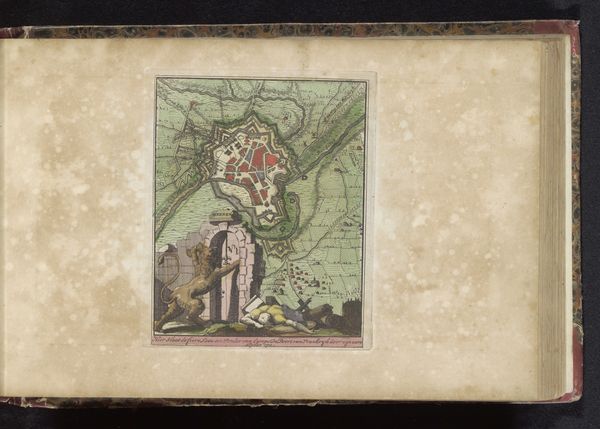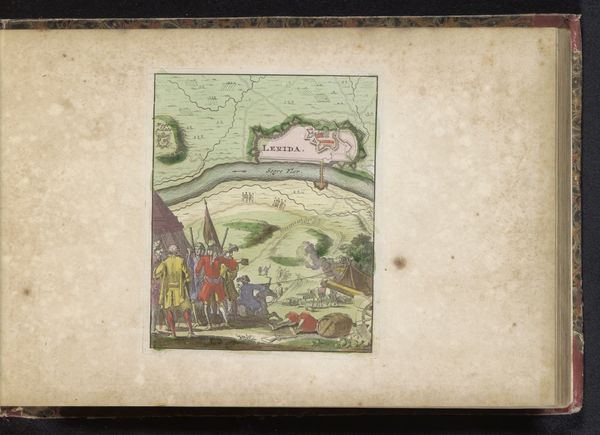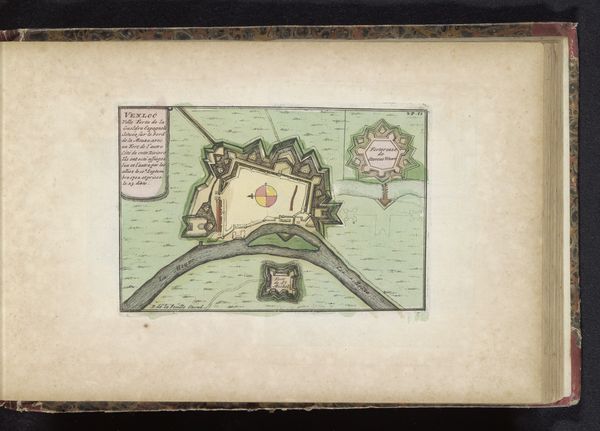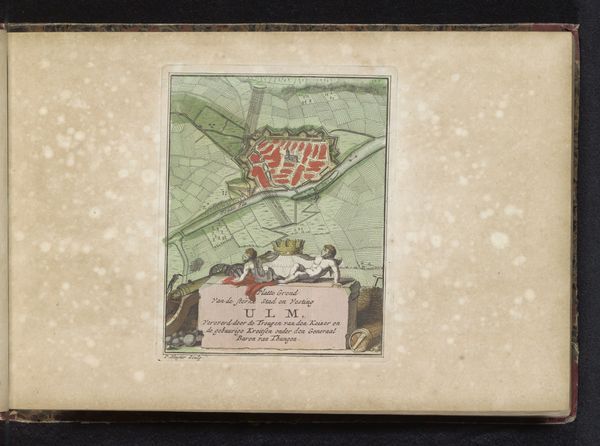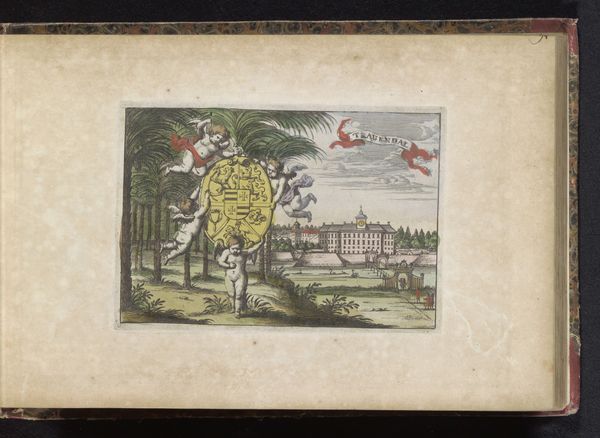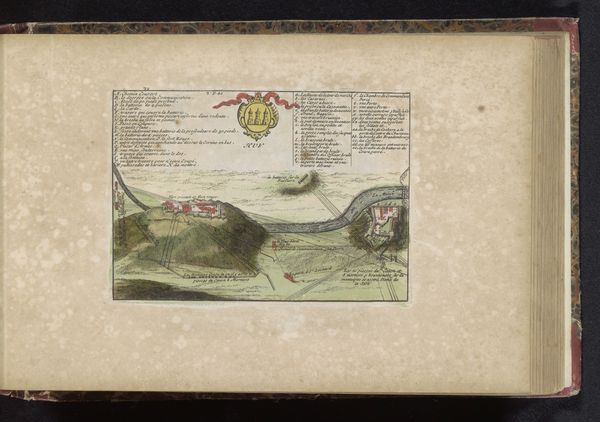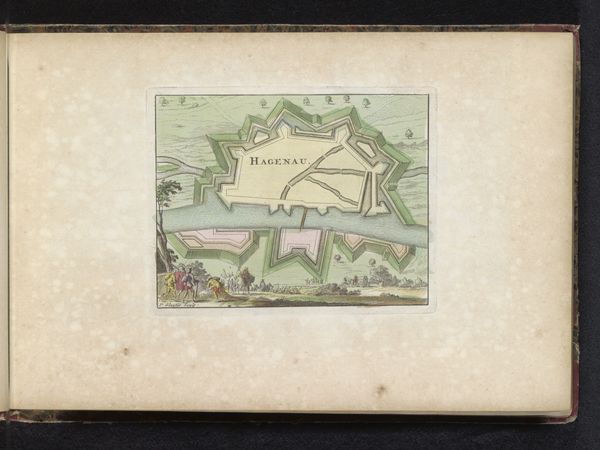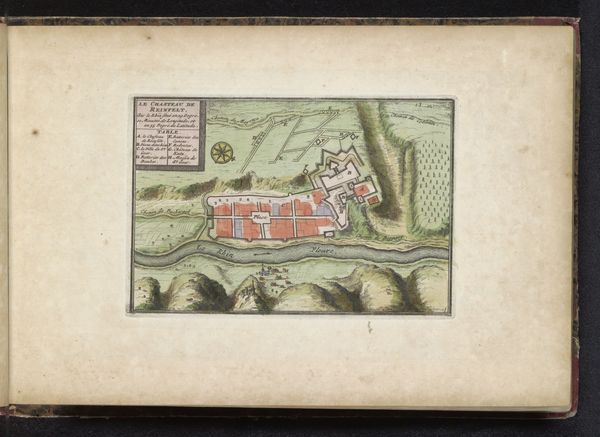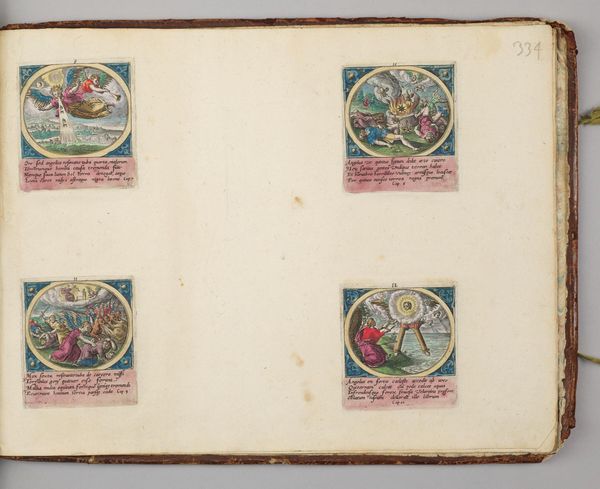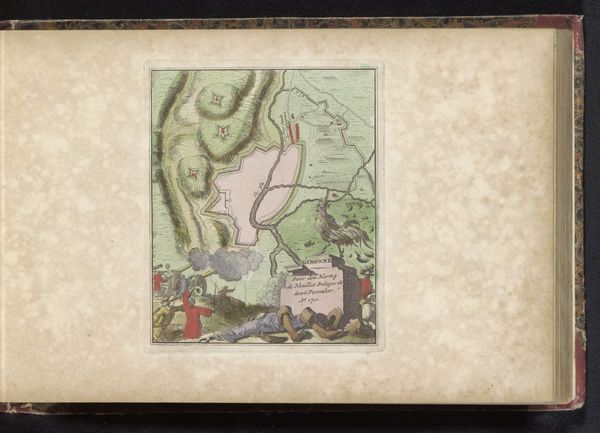
drawing, painting, print, watercolor
#
drawing
#
painting
# print
#
landscape
#
watercolor
#
coloured pencil
#
cityscape
#
genre-painting
#
history-painting
#
miniature
Dimensions: height 153 mm, width 121 mm
Copyright: Rijks Museum: Open Domain
Curator: This delightful image is titled "Plattegrond van Zoutleeuw en de inname in 1705", or "Map of Zoutleeuw and its Capture in 1705." Zacharias Chatelain the Younger created this painting in 1735. Editor: It's surprisingly charming for a depiction of military conquest. The pastel shades give it almost a storybook feel, and the cherubic figures holding the drape certainly soften the impact. Curator: It’s a fantastic example of cartographic art as propaganda. Chatelain clearly aimed to glorify the event. Editor: Absolutely. Note the way the town is presented like a carefully arranged dollhouse, neatly contained within its star-shaped fortifications. The red rooftops within create an undeniable symbolic core. Curator: Those fortifications were essential in the early 18th century; Zoutleeuw’s strategic location made it a valuable military target, contested in numerous conflicts. Visualizing its layout underscored its importance. The surrounding landscape emphasizes the scale of the operation against the natural terrain. Editor: Indeed, and the tiny scene at the bottom reinforces the idea of triumphant armies. It really distills the visual vocabulary of power and dominance of that era, doesn't it? Curator: Precisely. Think about the public this image was intended for. These weren't simply geographical documents; they were crafted to shape public opinion, bolster national pride. Editor: So, what appears at first glance to be an innocent landscape is actually a carefully constructed narrative of power and authority. A visual echo of the political and military aspirations of the time. The cherubs, after all, could symbolize divine approval. Curator: A fascinating blend of art and politics that encourages a closer look at how history is shaped, even in seemingly objective records like maps. Editor: It's a potent reminder that even the most detailed and apparently objective imagery can be subtly loaded with symbolic meaning.
Comments
No comments
Be the first to comment and join the conversation on the ultimate creative platform.
